Lyndon Dykes is Livingston's perfect striker, and opponents hate him for it
Scottish Premiership defences are scared of the Livi star, with good reason.
When Livingston confirmed the signing of Lyndon Dykes in January 2019, the news just about registered on the Premiership radar. There were murmurs of “decent signing” here and whispers of “he’s got potential” there. Opposition players and managers probably didn’t think too much of it.
Fast forward one year and, after a brief loan spell with former club Queen of the South in the Championship, Dykes is terrifying Premiership centre-backs.

The 24-year-old caused endless problems for Celtic as Livingston inflicted defeat on the champions in October, prompting Chrisopher Jullien - a £7million signing - to apologise for his defensive performance on the day. “Sorry Celtic fans for being too nervous last time, it won't happen again,” he Tweeted. “I have to thank Livingston's forwards for that wake up call.”
Last month, after Rangers beat Livingston at Ibrox, Nikola Katic mentioned Dykes in a post-match interview. “When you play against a striker like Dykes it’s always tough because he is really good,” Katic said. “Almost he’s on the same level as Alfredo [Morelos] and I think he will become a really top player, it is always hard to play against him.”
To be fair, Dykes did warn them.
In an interview after arriving properly at Livingston last summer, he showed confidence - “I’ve just got to do my best and I know it’ll be good enough” - and broke down his own game pretty comprehensively - “I’m quite quick, I work hard for the team, I’m strong, hold the ball up, can run in behind, link up play and hopefully score a few goals as well.”
Livi’s focal point
Livingston are the most direct side in a direct league. A lot of Premiership teams place great emphasis on long balls as a form of getting up the pitch, but nobody focuses more on this than Livi. They play 1.52 long balls per minute of possession, which is the most in the division. Hamilton (1.47), St Mirren (1.46) and Ross County (1.44) are their nearest challengers, but none of them are on the same ‘directness’ level.
With that in mind, it’s important for Gary Holt’s side to have someone up front they can target with these long balls. They didn’t really have this last season, but Dykes has provided an excellent aerial outlet.
Looking at all Premiership target men who have played over 900 minutes of league football this term, only three are significantly better than Dykes when it comes to winning aerial duels - Ross Stewart at County wins 53.8%, Aberdeen’s Sam Cosgrove wins 48.6%, and Hamilton’s Marios Ogkmpoe wins 46.9%. Curtis Main wins just 0.1% more than Dykes’ 40.3%, though Main is also involved in just 11.9 aerial duels per 90 minutes - exactly half the 23.8 per 90 that Dykes contests.
Decent big men like Christian Doidge at Hibs, Uche Ikpeazu at Hearts, Jonathan Obika at St Mirren and the Accies’ George Oakley all fall behind Dykes not only in the sheer volume of aerial duels challenged for, but in percentage of aerial duels won.
Clearly, Dykes is good in the air. The numbers may have something to do with the quality of long balls played to him, but they also have a lot to do with his 6ft 2in frame and the way he uses that frame. He’s almost impossible to bully and, four times out of 10, he wins the header.
Livingston have built their attacking game around Dykes and always have runners beyond him. Holt has switched from a 3-5-2 to a 4-2-3-1 this season, though both wide men come inside and run behind Dykes when he challenges for aerial duels on long balls from back to front, gambling on him winning the duel and flicking the ball on.
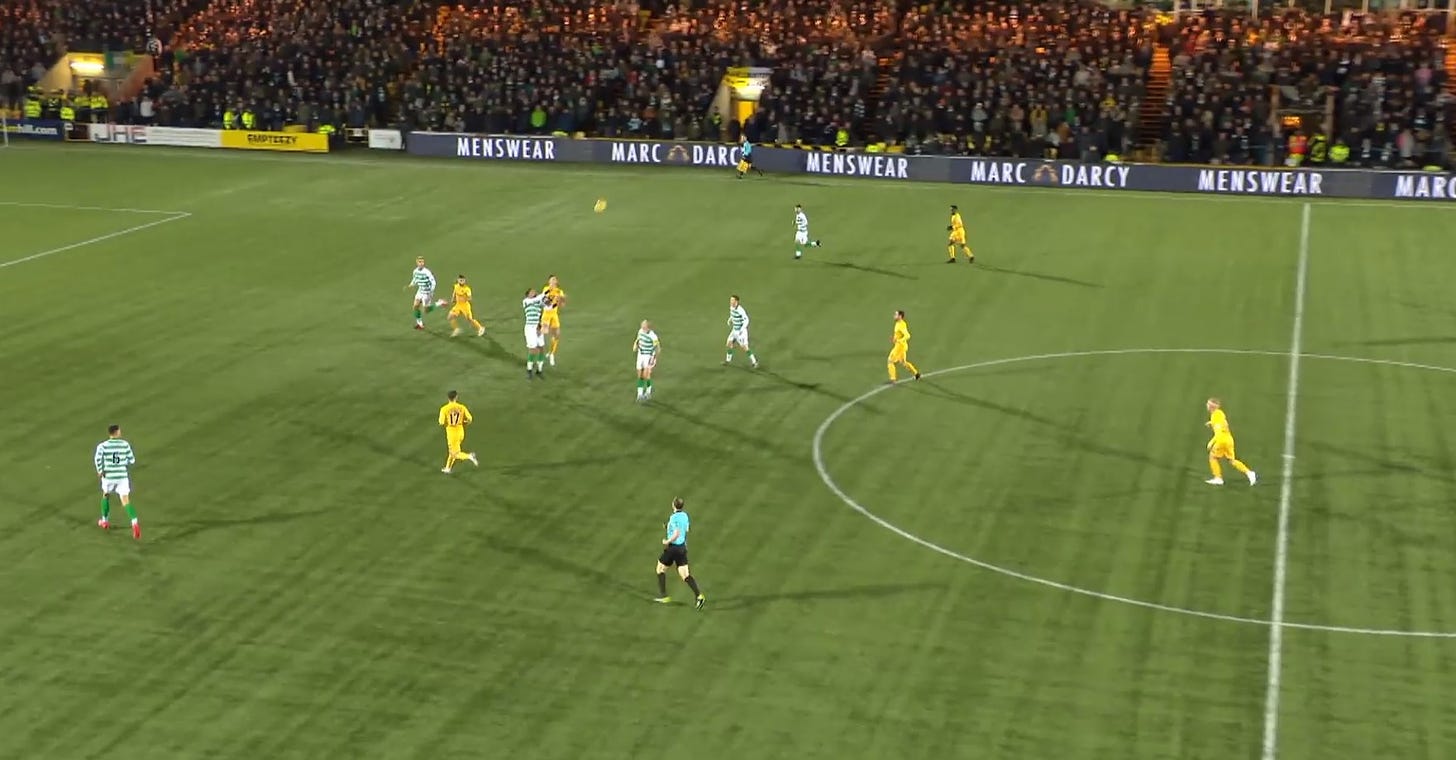
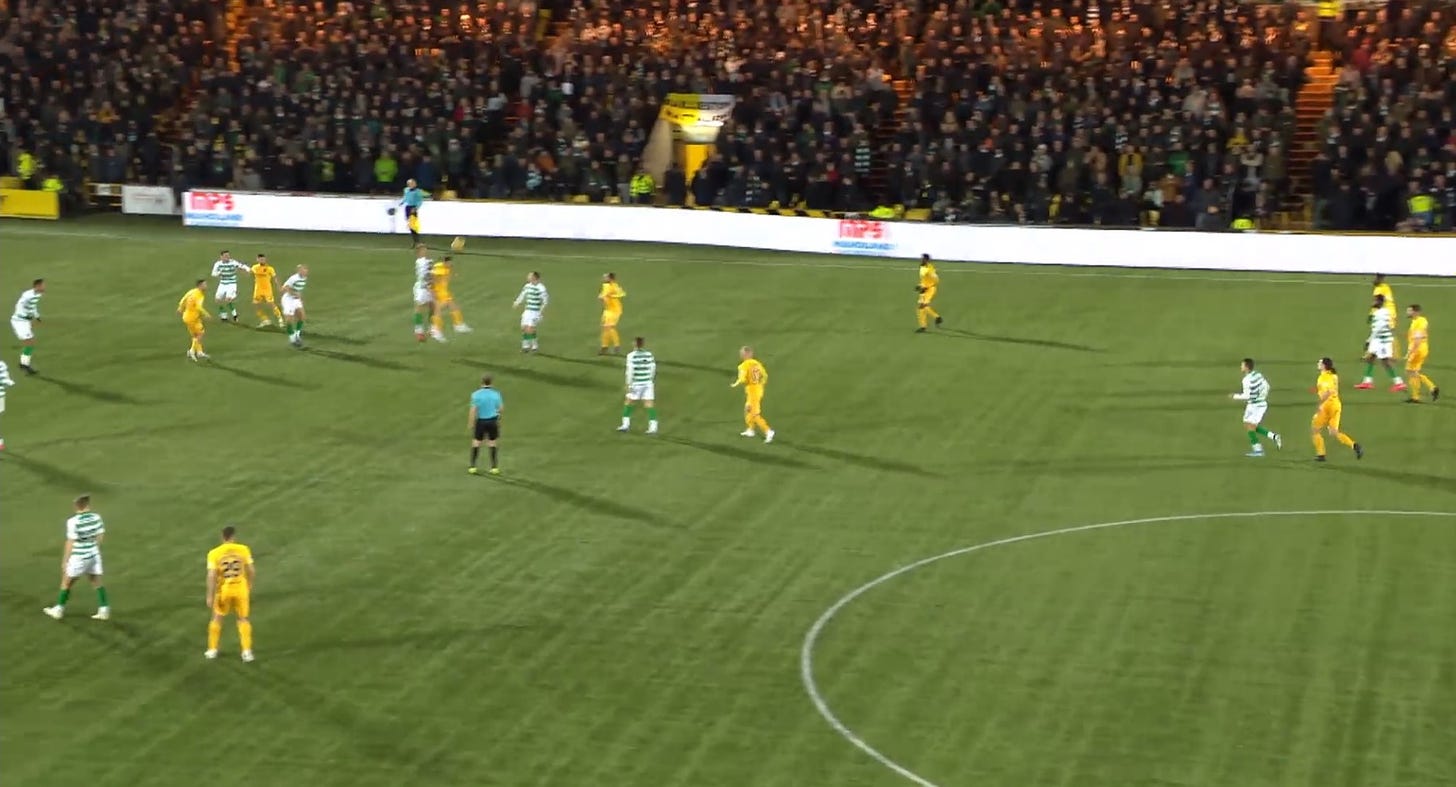
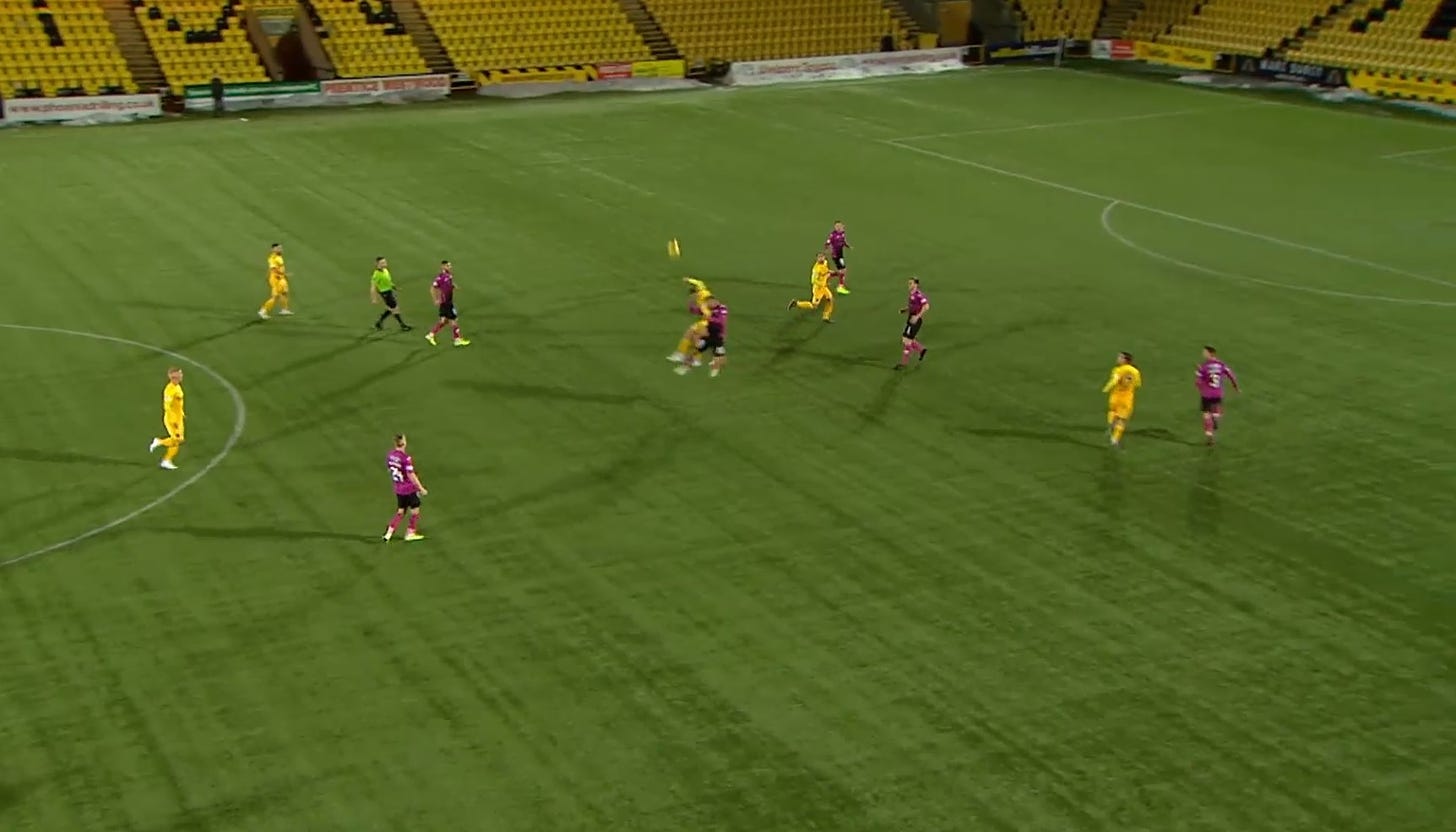
Even though Dykes doesn’t always win the first ball, he always makes it hard for defenders to properly clear their lines. A lot of the time the ball falls into the space between Dykes and the midfield, and as seen in the examples above Livi always have men in support to try and win the second ball or put instant pressure on the receiving opponent.
Livingston don’t play into midfield a lot - they prefer to do their ‘playing’ in the opposition half. But once they do have possession in the opponent’s territory, they look to combine. Dykes is adept at linking play in these situations.
Below, against Hibs, he peels off the frontline and offers to receive from Steven Lawless. He then plays a one-two with his teammate, which eliminates a defender and puts Lawless into position to play Scott Pittman in behind the Hibs back line.
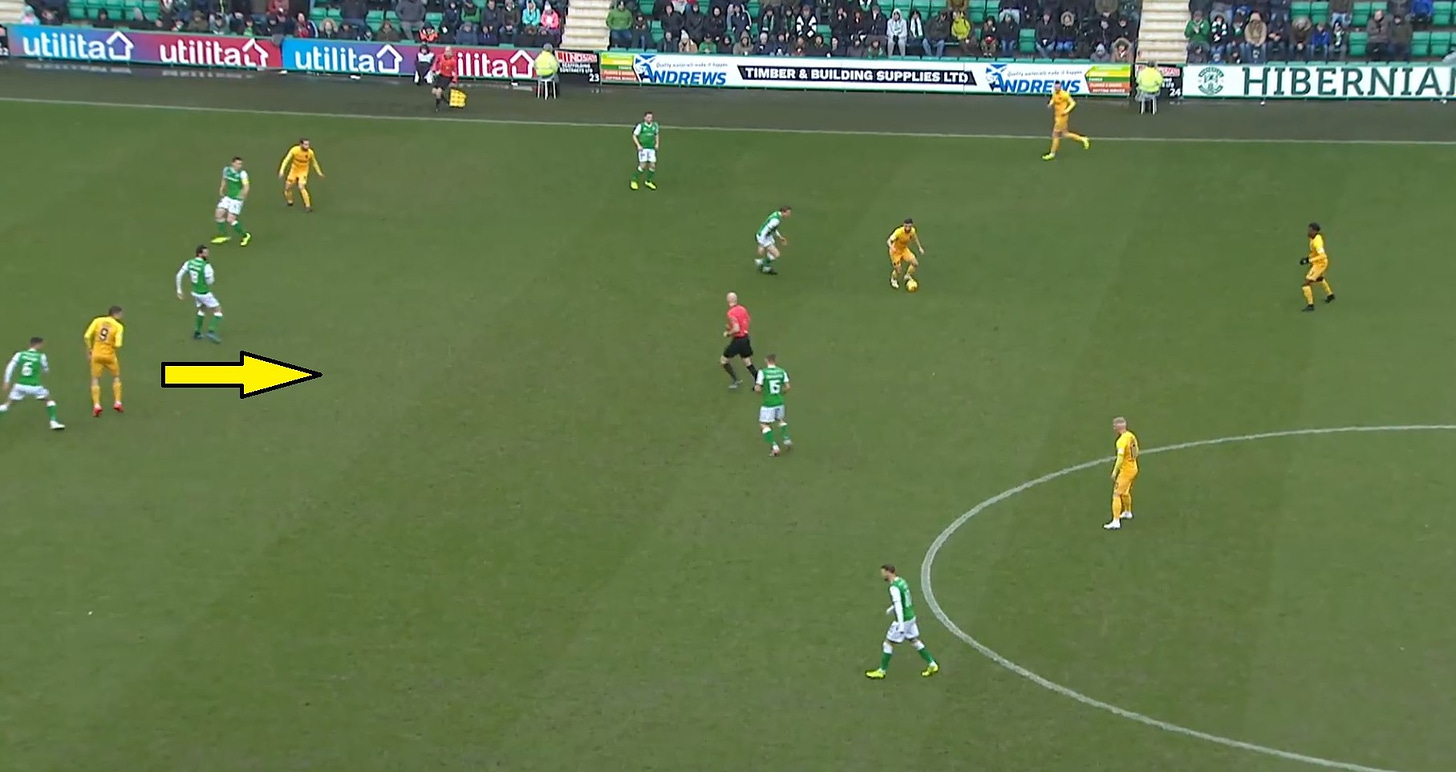

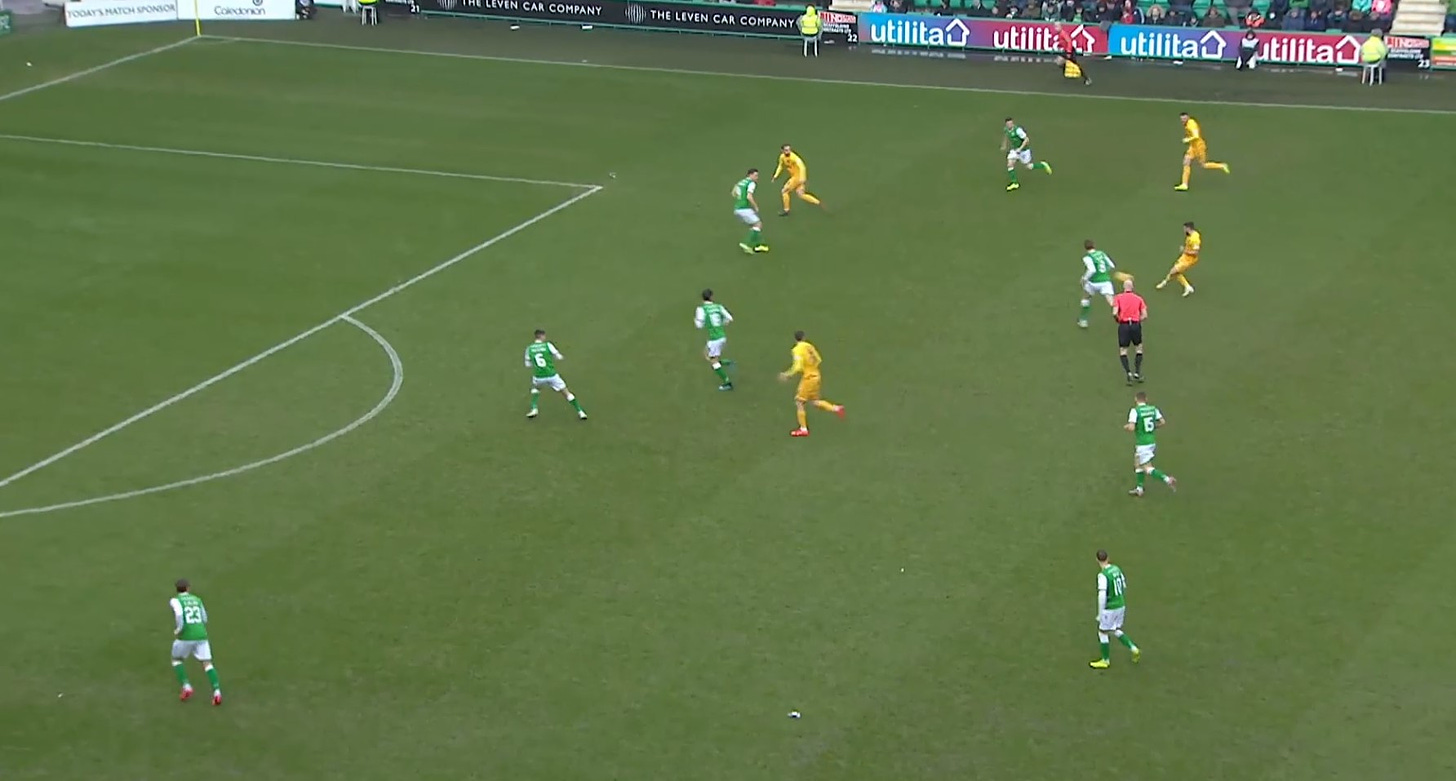
And in the graphics below against Motherwell, we see Dykes receiving with his back to goal, drawing defenders out of position, controlling well, turning and slipping a through ball for Scott Robinson to get on the end of.

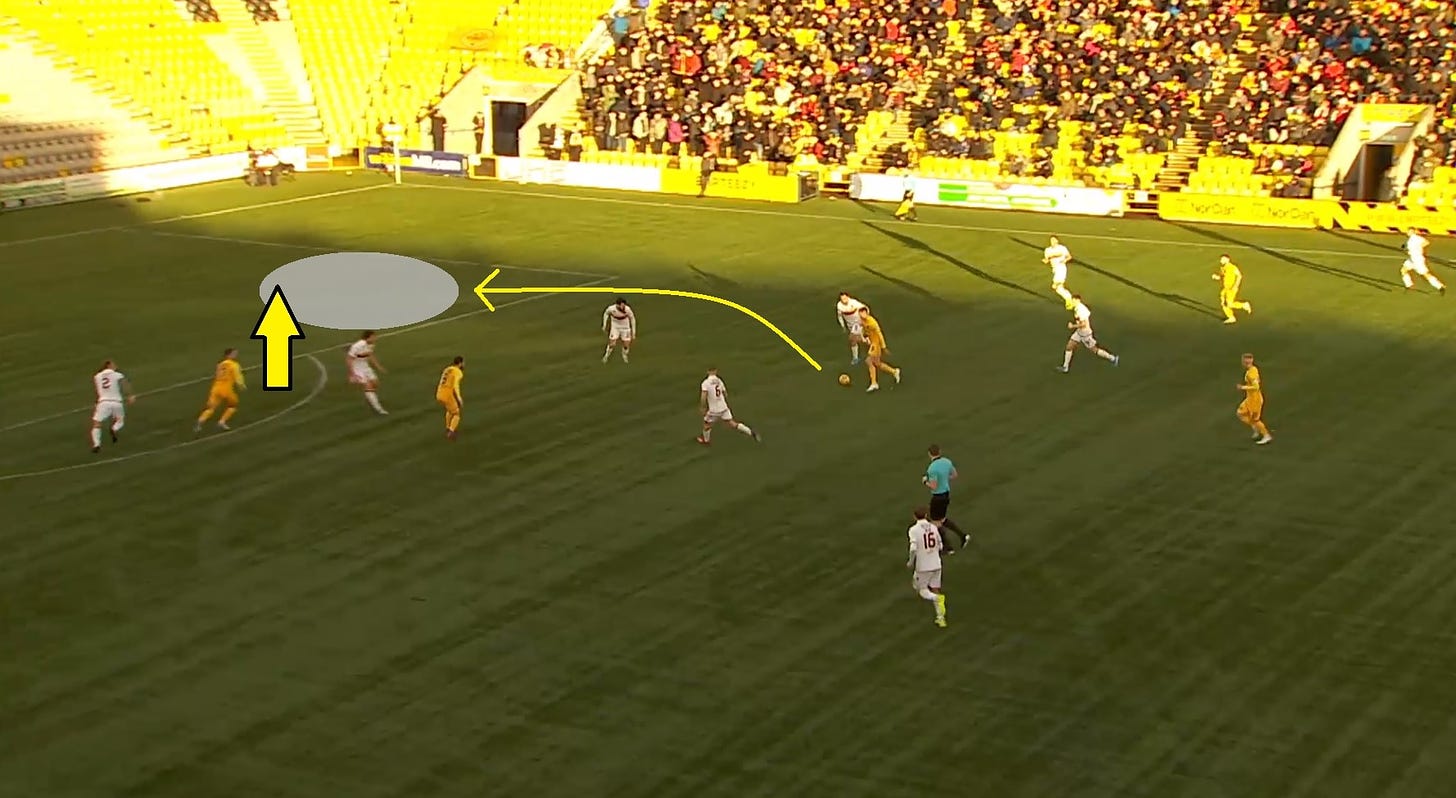
So Dykes is the primary outlet for Livingston’s direct build-up, wins a good share of his headers, and he’s also heavily involved in combination play once the ball hits the deck. And not only does he help his team establish possession and create in the opponent’s half, but he consistently gets on the end of chances too.
He has scored nine goals, none of them penalties. Only five Premiership strikers have scored more this season, and three of them play for the Old Firm. The other one is Cosgrove, and three of his 11 goals have come from the penalty spot.
Dykes has a knack for positioning himself in the right place at the right time. Three of his nine goals have been headers after darting runs to attack crosses. Another three have come from close range after cut-backs. But he has also shown composure and class to work goals from more difficult situations, such as his chip over Fraser Forster in the win over Celtic.
Defending from the front
Dykes’ all-round offensive game is integral to the way Livingston progress, create and finish. He’s an important presence every step of the way. He’s also a key player even when his team don’t have the ball.
A lot of Premiership target men switch off when their team isn’t attacking. They either don’t press at all, press halfheartedly, press inconsistently, or press stupidly, headless chicken style. Dykes, however, is both intelligent and aggressive in pressing, and essentially sets Livingston’s stall out defensively.
One thing he does constantly is split the opposition centre-backs. This is particularly noticeable when the opposition play a back four, with two centre-backs Dykes can get in between and cause bother to.
Below, against St Mirren, Dykes recognises the ball is going to the right centre-back and angles his run accordingly. By doing this, he takes away the pass across the back line to the left centre-back. Basically, he cuts the pitch in half, all while putting pressure on the ball and taking away the opponent’s time and space.
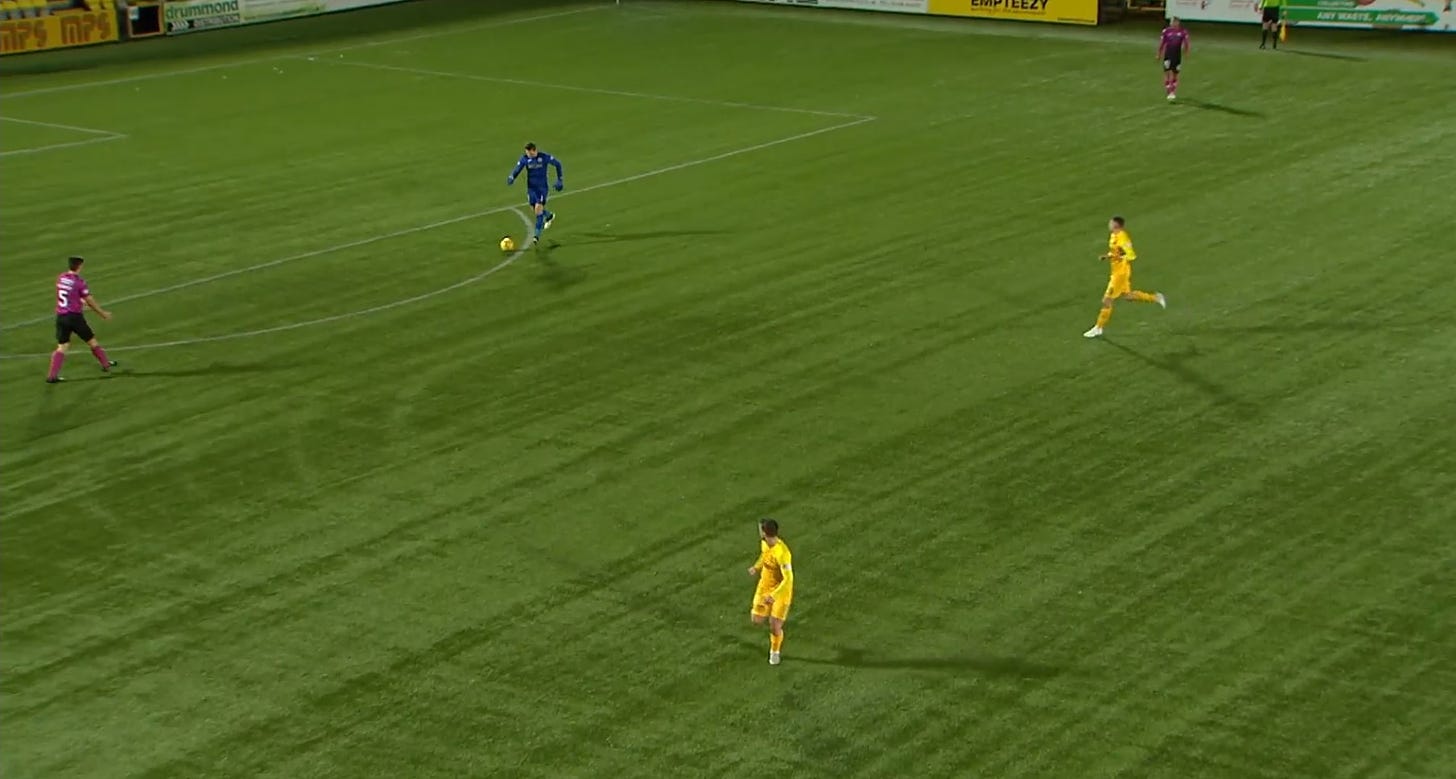
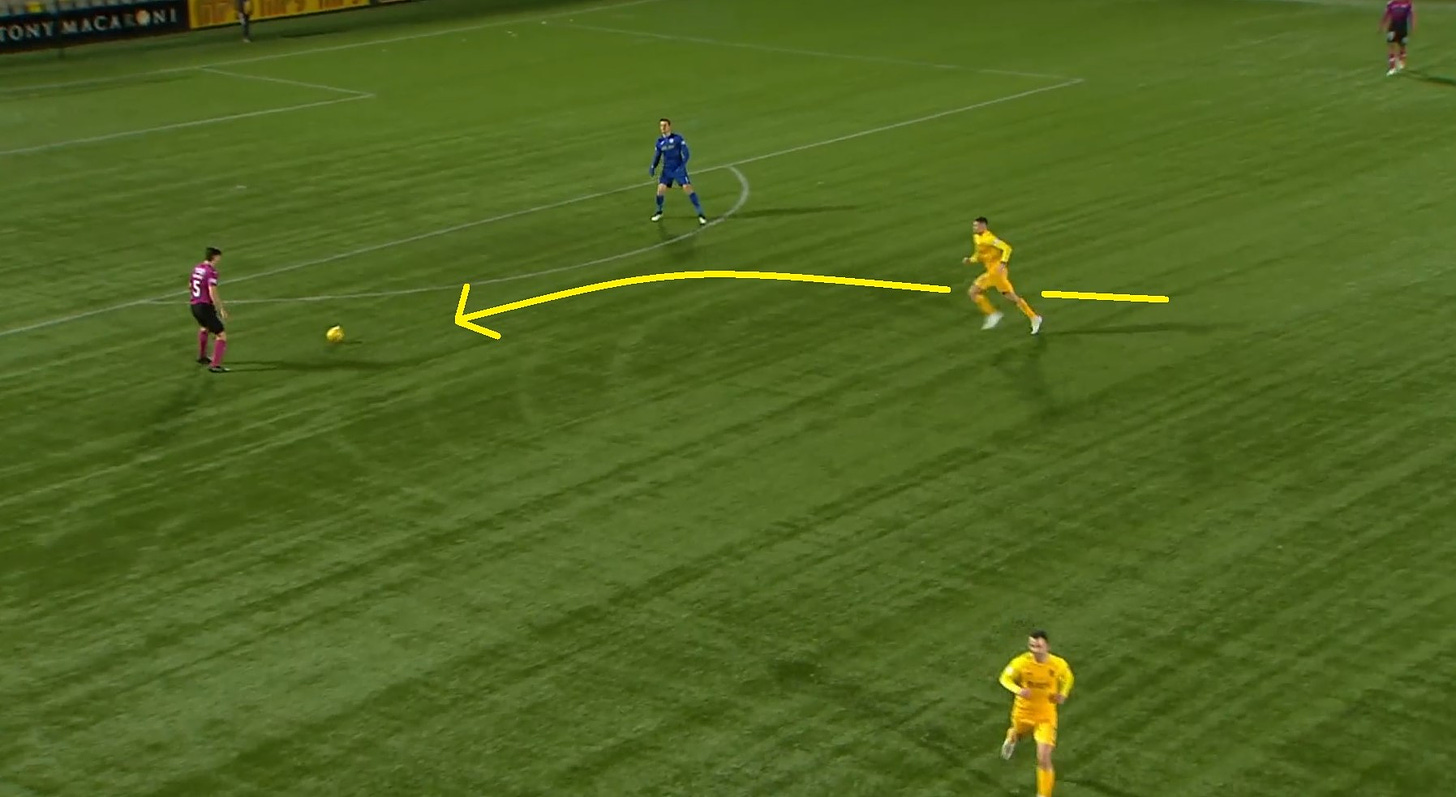
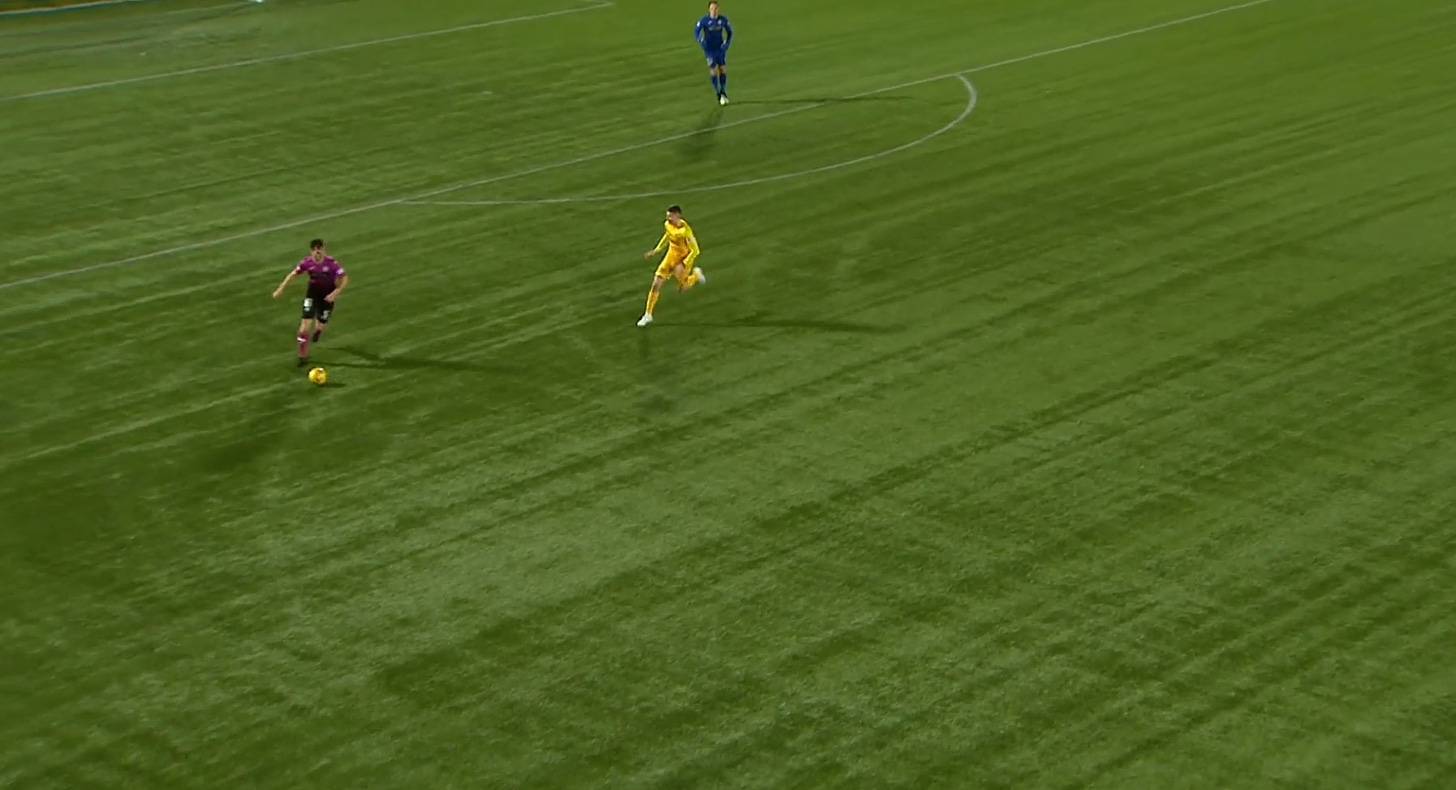
And just to prove this wasn’t a one-game thing, below are some other examples of him doing the exact same pressing run to cut out the pass along the line and force the opponent to go down one side of the pitch.
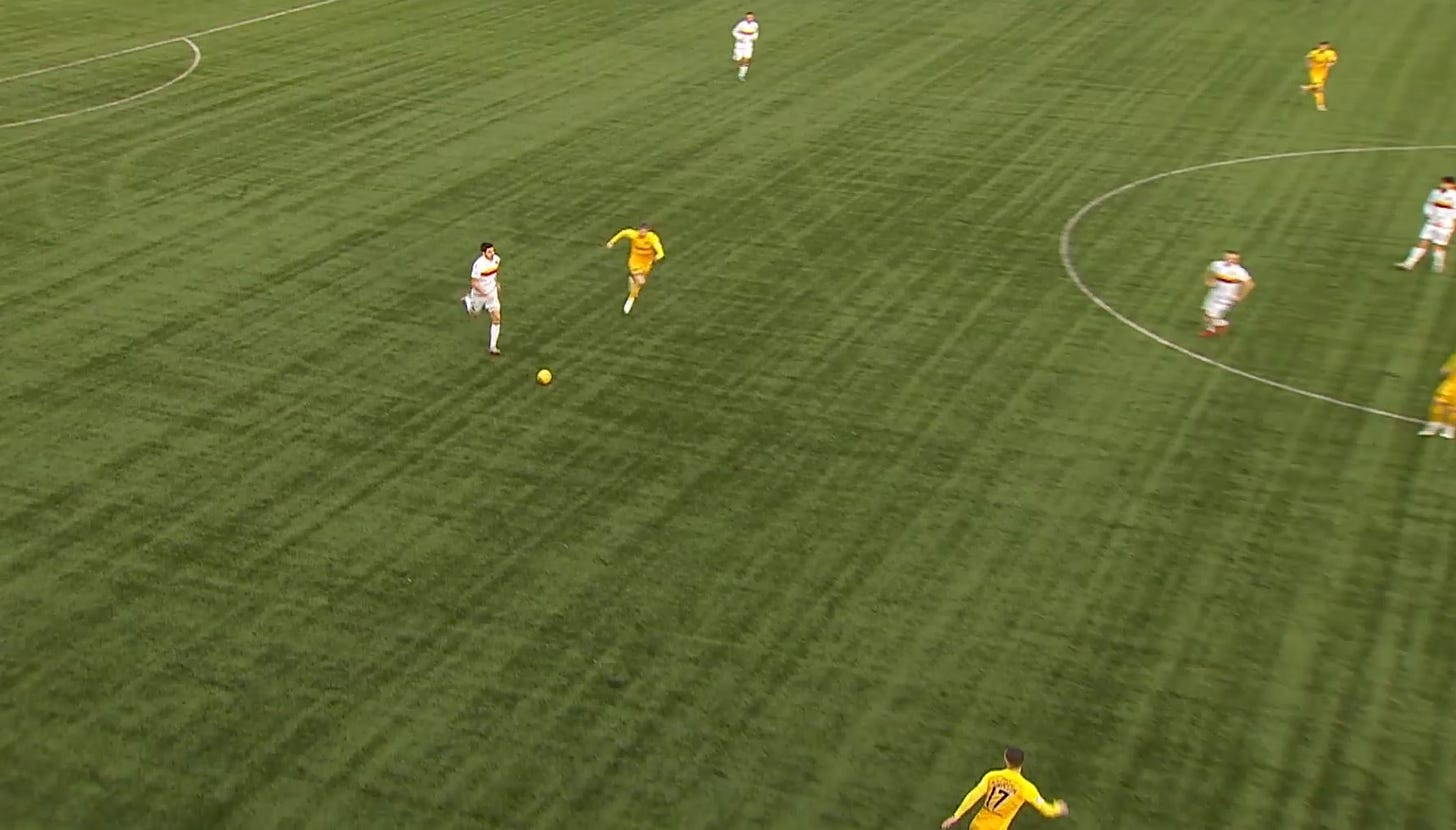
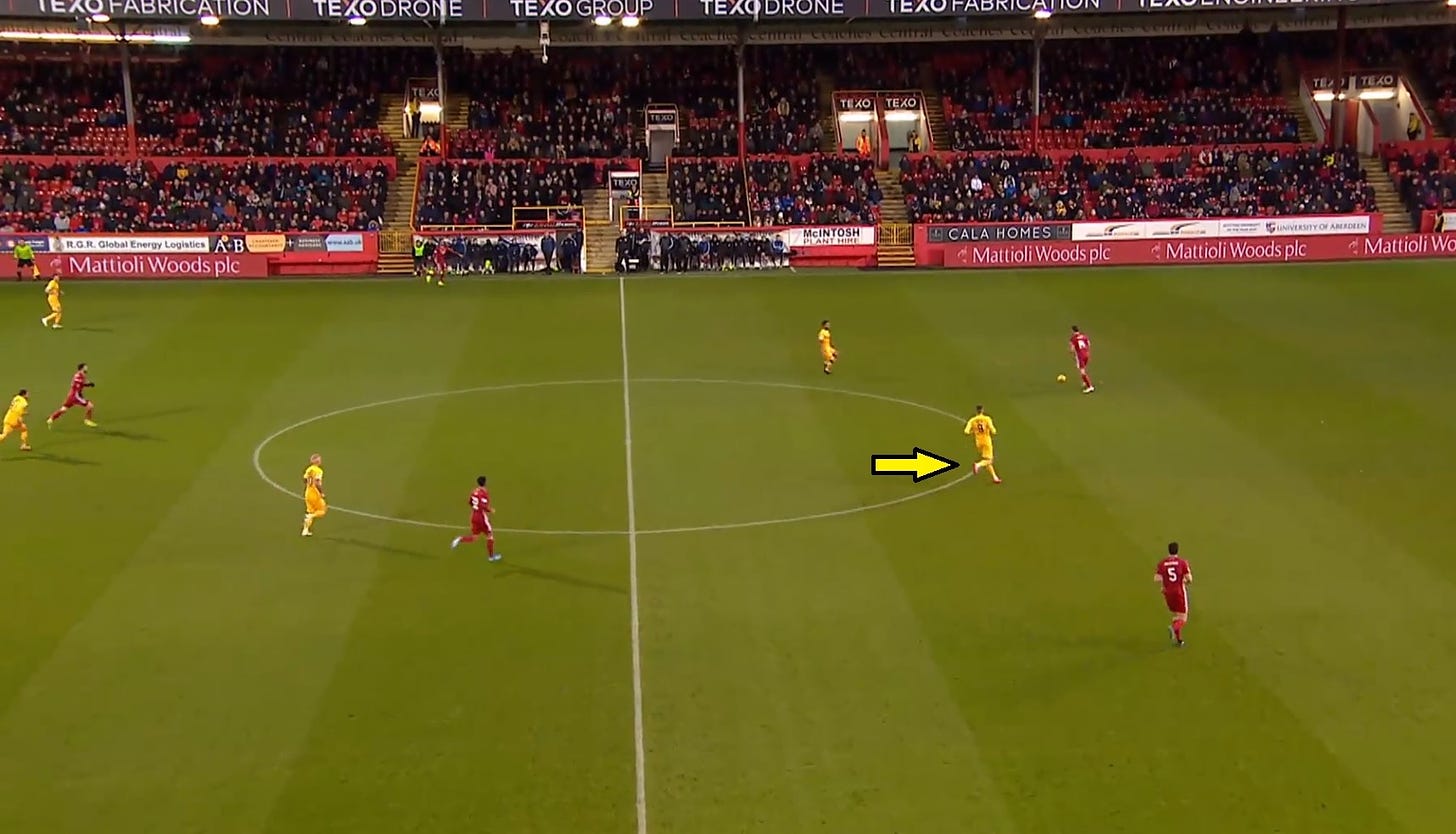
Passes per defensive action, or PPDA for short, is a way of measuring the intensity of a team’s pressing. Livingston are fourth in the Premiership - behind only Rangers, Hearts, then Celtic - in PPDA. This means only three teams in the league allow their opponents to play fewer passes, on average, than Livi.
Dykes is quite literally at the forefront of all this, and is vital to the way Holt’s men defend.
Livi employ a man-marking defensive system that is only slightly more flexible than that seen at Aberdeen. What a lot of man-marking teams do is have everyone bar the striker back defending - so nine outfielders. Up against a team playing a back four, that usually means they have an initial 9v8 advantage as the opponent will keep two centre-halves and a goalkeeper back.
The problem with this is when an opponent has positive centre-backs on the ball - a Kristoffer Ajer or a Declan Gallagher, say - the initial 9v8 advantage is made irrelevant. The centre-back advances, and it becomes a 9v9. Equal numbers, and now the man-marking team need to make quick decisions re: who goes to the ball and who switches to the free man. In these moments, the man-marking can easily unravel.
Livingston don’t have that problem, because Dykes is very active defensively. He reduces the opponent’s options by splitting centre-backs and funneling them down one side of the pitch. Cutting the playing area available to the opposition, he makes it easier for Livi to man-mark as the number of players involved is fewer and the distances needing covered are smaller. On top of all that, he takes away the time centre-backs have to get set and pick a pass.
He is, in short, a pain in the arse.
Variety in transition
One of the great things about watching games live, in the stadium, is that you can see the whole pitch and understand what’s happening off the ball. Having watched Dykes live, I can confirm first-hand the threat he poses in transition.
Unlike a lot of target men, he has decent pace, allowing him to spring offside traps and attack spaces in disorganised defences. He was particularly effective in this away to Hearts last year, where he constantly offered an option in behind with runs between the centre-backs.
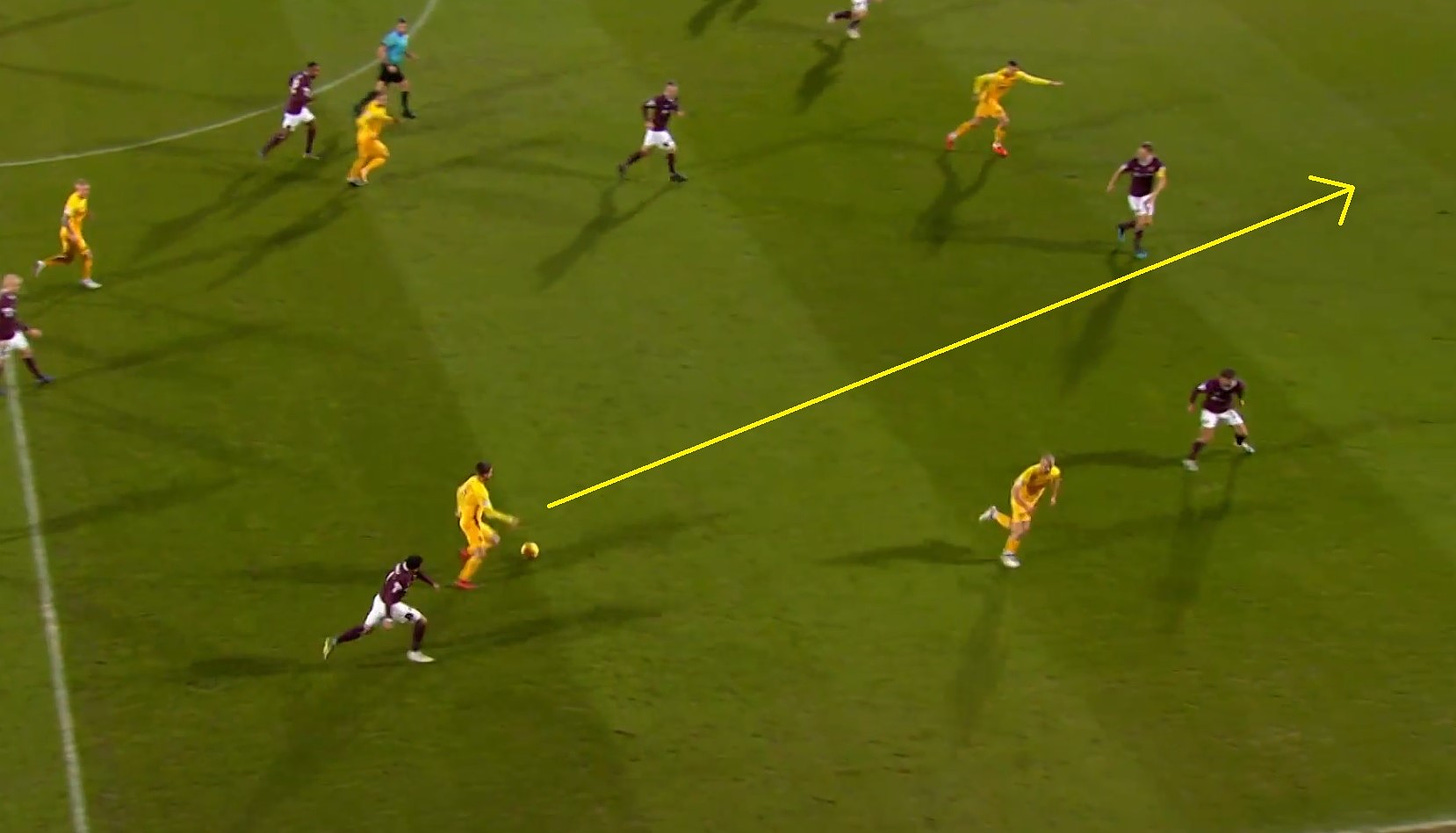
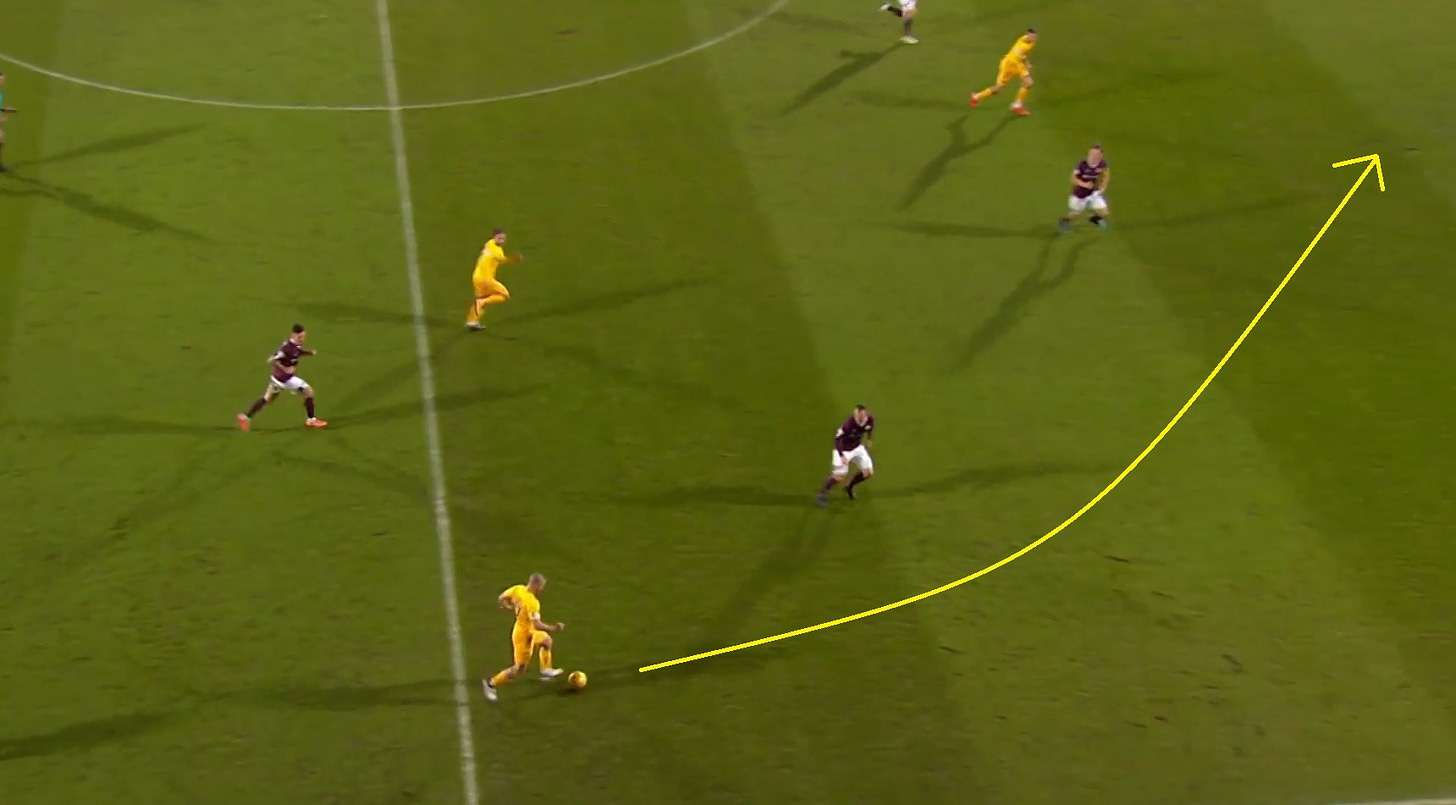
In that same game Dykes showed that his threat in transition is as much about his intelligence as it is about his pace.
Below, Livingston are counter-attacking and Robinson is on the ball. Recognising Robinson is moving towards the left and that Pittman may receive, Dykes makes a move to the right. In doing so, he occupies Christophe Berra, taking one of the two Hearts centre-backs away and creating more space for Pittman to attack in.
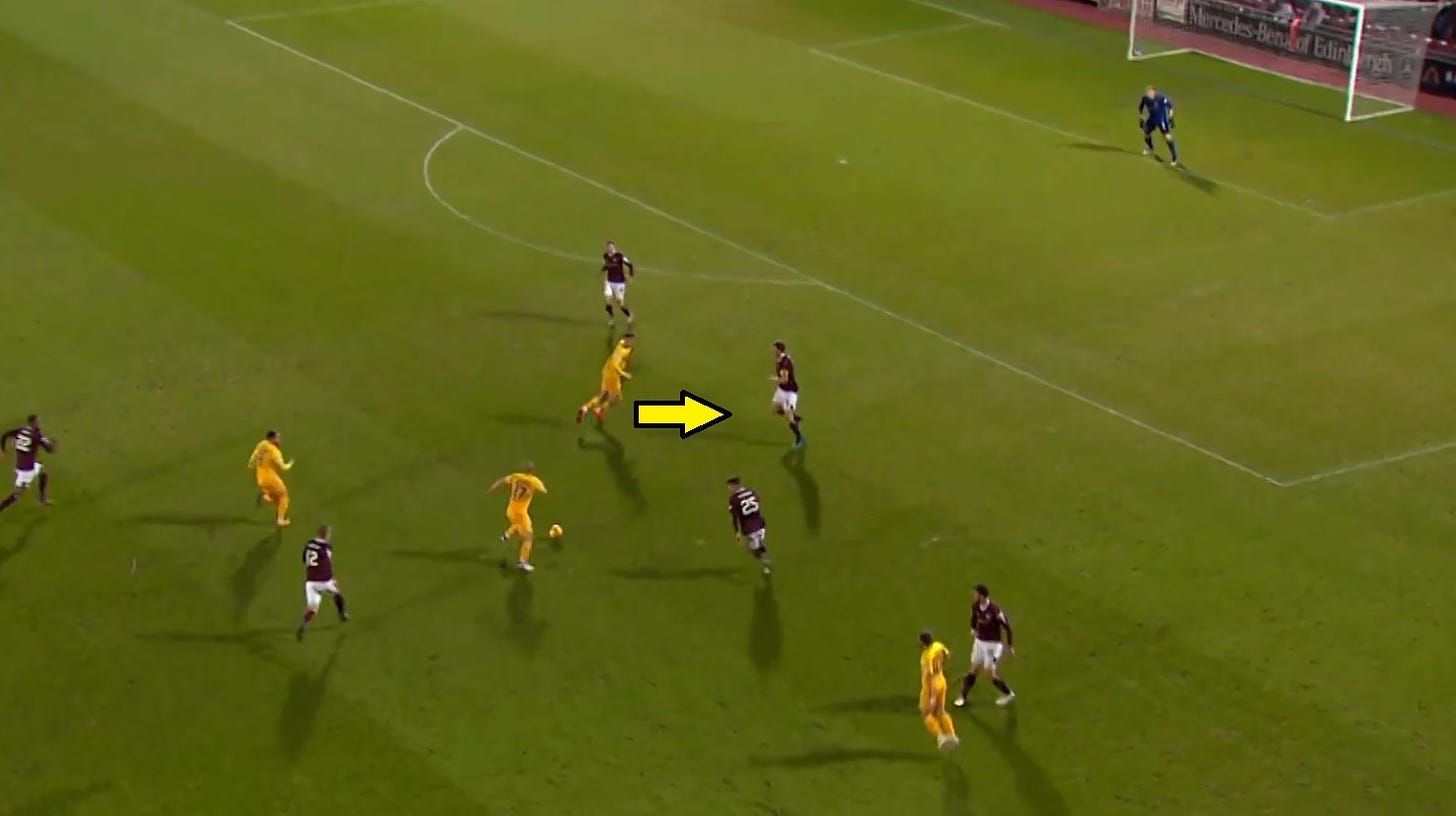
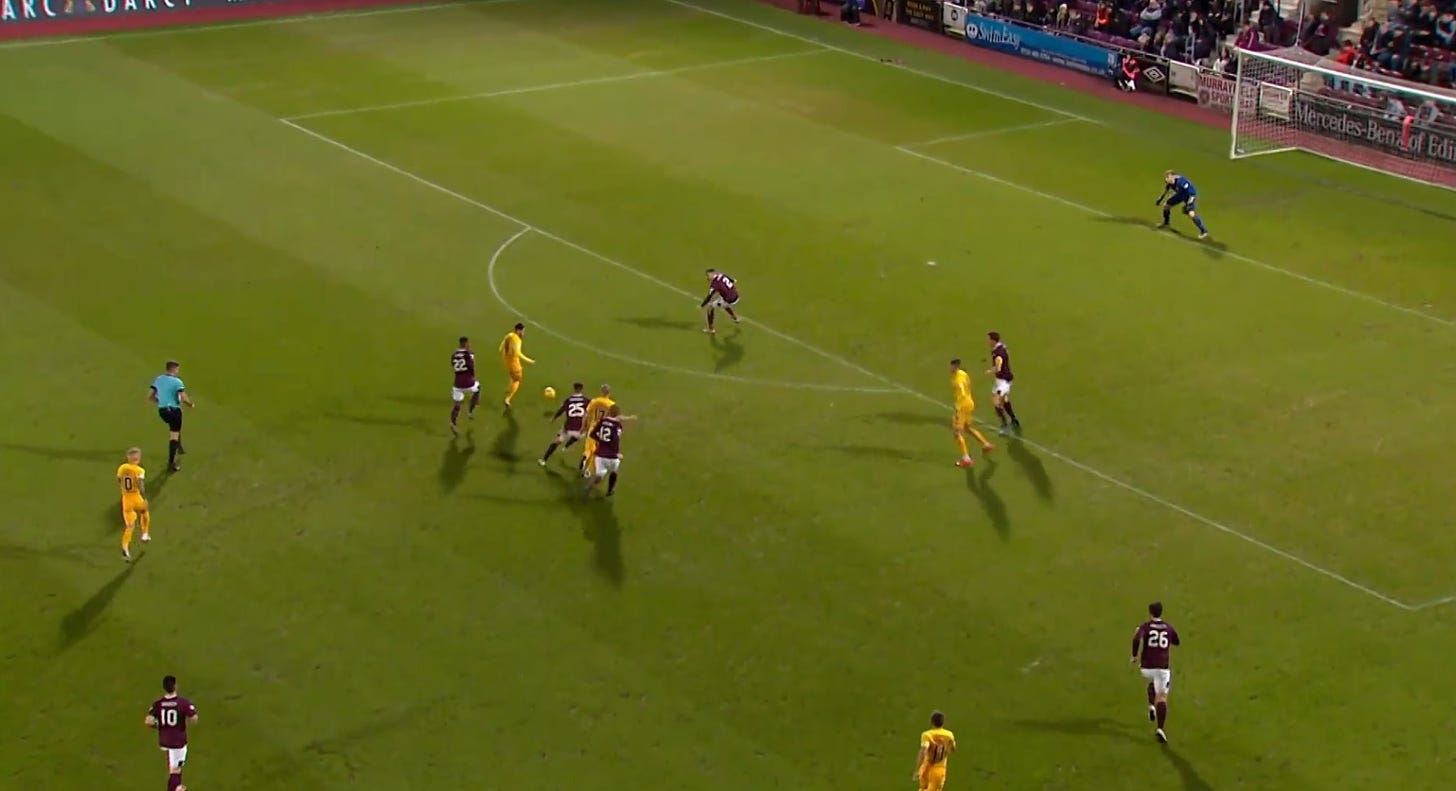
Dykes is a varied attacking threat in transitions, because he can do several things. He has the pace to get in behind, the intelligence to identify and create space for himself and others, and - if the ball in behind isn’t on - he has the touch and physical presence to come short, hold off defenders, receive to feet and link up counter-attacks.
A defender’s nightmare
Livingston play direct attacking, and Dykes is heavily involved in every aspect of it. Livingston press aggressively, and Dykes is their defensive spearhead. Livingston like to play forward quickly in transition, and Dykes gives them a multitude of counter-attacking options. Hell, he even helps out on their famous long throw routines - both taking and attacking them.
Interestingly, in the five league games (admittedly a small sample size, but still) he has missed this season Livi have failed to win, averaging 0.13 points and 0.8 goals per game. By contrast, when Dykes does play, they average 1.48 points and goals.
If playing Livingston was uncomfortable last season, Dykes has turned the ordeal into a nightmare. It’s difficult to think of another player who so embodies the team he plays for. Some opponents - like Jullien and Katic - respect him. Some probably fear him. What’s for sure is that no Premiership centre-back actually enjoys defending him.
If you liked this article, please give it a share. And if you want to read more analysis of Scottish football, you can sign up to The Second Ball by clicking below. Thanks for reading, Blair.

